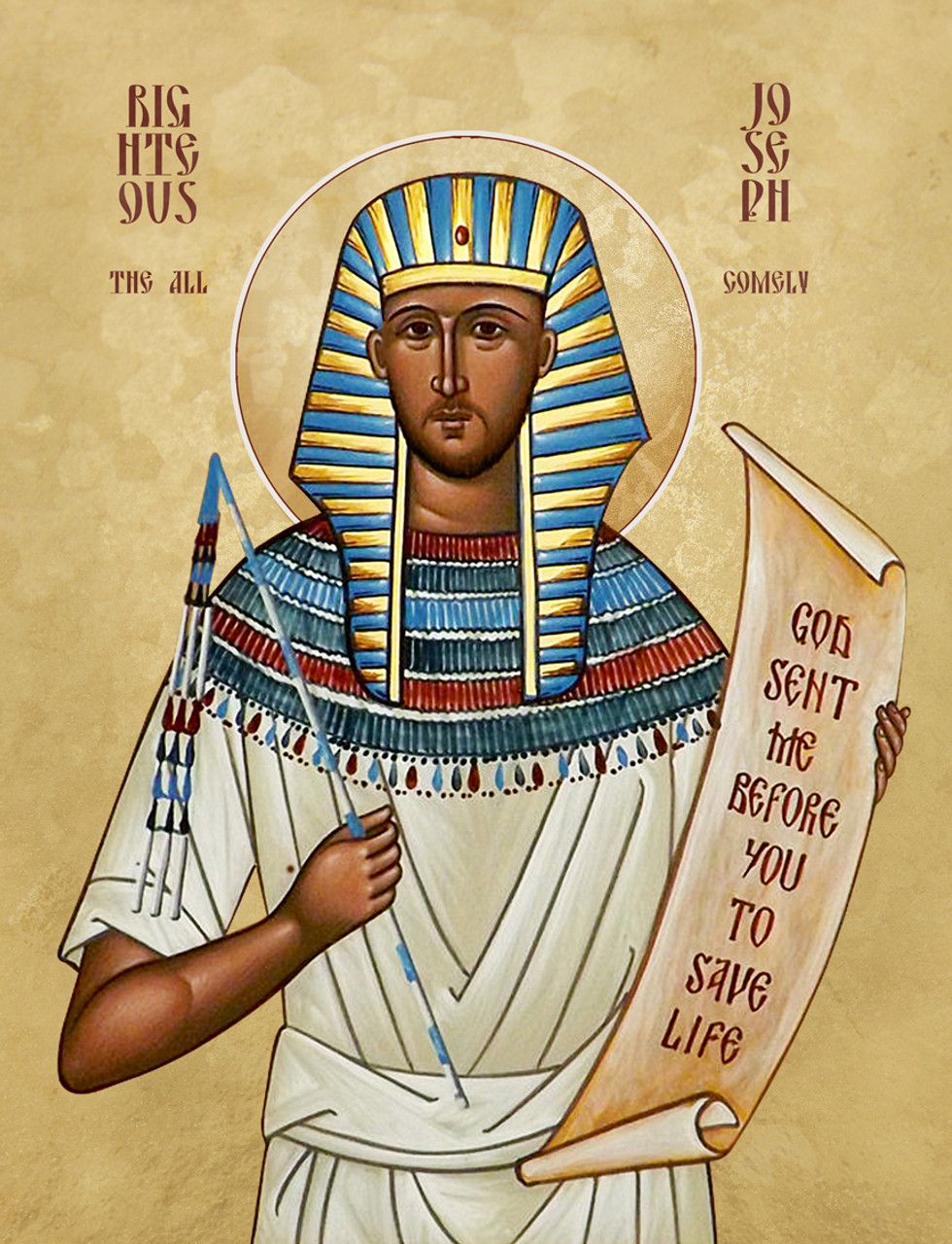- The Hesychast
- Posts
- Great Monday (Holy Monday): Vigilance and Repentance in Holy WeeK
Great Monday (Holy Monday): Vigilance and Repentance in Holy WeeK
In the Orthodox tradition, Great Monday commemorates two poignant biblical events: Joseph the All-Comely (Joseph of the Old Testament, the son of Jacob) and the cursing of the fig tree by Jesus.

Icon of Christ the Bridegroom, displayed in churches at the start of Holy Week.
These two commemorations may seem unrelated, but together they set a tone of repentance and faithfulness. Joseph’s life prefigures Christ’s Passion and virtue, while the withered fig tree is a stark parable about the need to bear spiritual fruit.
Through these, the Church urges us to examine ourselves: Are we living faithfully like righteous Joseph? Or are we spiritually barren like the fruitless fig tree? In what follows, we delve into each of these themes and their meaning for us today.
Joseph the All-Comely: A Righteous Life Foreshadowing Christ
On Holy Monday we remember Joseph, the son of Patriarch Jacob (see Genesis 37–50). Joseph is called “All-Comely” (or “the Fair”) for his spiritual beauty and virtue. His life is a vivid foreshadowing of Jesus Christ.

Icon of Saint Joseph the All-Comely (Patriarch Joseph of Egypt)
As a young man, Joseph was betrayed by his own brothers, thrown into a pit and sold into slavery for pieces of silver – a direct parallel to Christ being betrayed by Judas for thirty silver coins. Through a series of trials in Egypt, Joseph remained righteous: he resisted the seductions of Potiphar’s wife, choosing purity and loyalty to God.
For this, he was falsely accused and imprisoned. Yet, by God’s providence, Joseph was eventually vindicated and raised up to glory – from the dark prison to become the right hand of Pharaoh, ruling over Egypt. In a similar manner, Christ endured betrayal and the tomb, and then rose to reign over all creation.
The Withered Fig Tree: A Parable of Fruitfulness and Faith
The second major theme of Great Monday is Christ’s cursing of the fig tree, recorded in the Gospels (see Matthew 21:18–20, Mark 11:12–14). After His triumphant entry into Jerusalem on Palm Sunday, Jesus saw a fig tree covered in leaves but found no fruit on it.

Icon fresco of Christ cursing the barren fig tree (Holy Monday theme).
He said, “Let no fruit grow on you ever again,” and the fig tree withered at once. This startling miracle is a “parable in action”.
On one level, the barren fig tree symbolized the spiritually barren state of many in Israel at that time – especially the religious leaders. They had the outward leaves of religiosity (the appearance of piety and the Law) but lacked the real fruits of faith, justice, and repentance.
Christ’s dramatic action warned that God desires genuine fruit from His people, not empty formality. As Scripture later teaches, “Every tree that does not bear good fruit is cut down” (Matthew 7:19).
This theme is a direct call to self-examination. We must ask: Am I all leaves and no fruit? Do I profess Christ but fail to live out His teachings? The Venerable St. John of Kronstadt admonishes us in his Holy Monday homily that we often resemble that barren tree:
“The fig tree by the roadside, with only leaves but no fruit, is like you and me, my beloved brothers. Our Lord Jesus Christ... will come to us someday to relieve the hunger of our souls... and [He] almost invariably finds nothing but worldly pursuits. By not caring for the salvation of our souls, we liken ourselves to the fig tree with leaves but no fruit.”

Icon of St. John of Kronstadt – a 19th-century Russian Orthodox priest and spiritual father, known for his deep prayer life and call to repentance.
These piercing words cut to the heart. They urge us to repent of our hypocrisy and spiritual laziness. Great Monday warns us: do not be a Christian in name and appearance only, but bear the fruits of sincere faith – prayer, mercy, purity, and obedience. Otherwise, we risk withering like that tree.
Called to Vigilance and Repentance: Our Response
Great Monday’s themes of Joseph and the fig tree are not merely stories from the past; they form a personal challenge to each of us, especially to young Orthodox men striving to live out their faith.
We stand at the doorway of the Bridegroom’s chamber – Christ is approaching in His Passion and Resurrection. Will we be found ready, with lamps burning and hearts full of faith? Or will we be sleeping, our souls empty of the oil of grace? Now is the time to act.
Blessed Holy Week, and a grace-filled journey to Pascha!


Reply